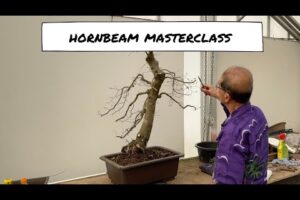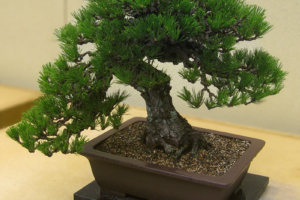Bonsai Roots and Nebari
Bonsai trees are miniature versions of full-sized trees that are grown in small containers and trained to mimic the natural growth patterns of mature trees. Two important aspects of bonsai care that are often overlooked by beginners are the roots and nebari. Understanding and properly caring for these elements is crucial for the overall health and beauty of your bonsai tree.
First, let’s take a look at bonsai roots. The roots of a bonsai tree are just as important as the trunk and branches. They play a crucial role in the tree’s ability to absorb water and nutrients, and they are also responsible for providing the tree with stability. When it comes to bonsai roots, it’s important to make sure they have enough room to grow but not too much room that they become root bound. This can be achieved by using a properly sized container with drainage holes at the bottom and by using a well-draining soil mix.
It is also important to periodically check the roots of your bonsai tree for any signs of root rot. Root rot occurs when the roots of a tree are sitting in water for too long. This can happen if the container does not have proper drainage or if the tree is being over-watered. Signs of root rot include yellowing leaves, a bad smell coming from the soil, and mushy roots. If you suspect your tree has root rot, it’s important to take immediate action by removing the tree from its container and trimming away any affected roots.
Another important aspect of bonsai care is nebari, which is the visible surface roots of a tree. A well-developed nebari is an important aspect of bonsai design and it is considered to be one of the key elements of a well-designed bonsai tree. A good nebari should be thick, wide and evenly spread out, with a good distribution of small roots. The nebari should also be symmetrical and well-balanced, with no large gaps or empty spaces.
In order to develop a good nebari, it’s important to start with a tree that has healthy roots. This can be achieved by selecting a tree with a good root structure and by repotting the tree in the proper soil mix. Once the tree is repotted, it’s important to periodically check the nebari and remove any unwanted roots or soil. This will help to encourage the development of new roots and promote a well-developed nebari.
It is also important to use proper pruning techniques when working on the nebari. This can be done by using scissors or a sharp knife to remove any unwanted roots or soil. It’s also important to be careful not to damage the remaining roots when pruning. It’s also important to not over prune the roots as this can cause the tree to become unstable and also can damage the tree’s ability to absorb water and nutrients.
Another technique that can be used to develop a good nebari is to use wires to guide the roots into the desired shape. This can be done by wrapping wire around the roots and gently bending them into the desired shape. It’s important to be careful when using wire, as too much force can damage the roots. It’s also important to remove the wire after a few weeks, as leaving it on for too long can also damage the roots.
In conclusion, roots and nebari are important aspects of bonsai care that are often overlooked by beginners. It’s important to understand the importance of these elements and to properly care for them in order to achieve a healthy and beautiful bonsai tree. This can be achieved by using a properly sized container, a well-draining soil mix, and by using proper pruning and wiring.







Leave a Reply
Your email is safe with us.
You must be logged in to post a comment.